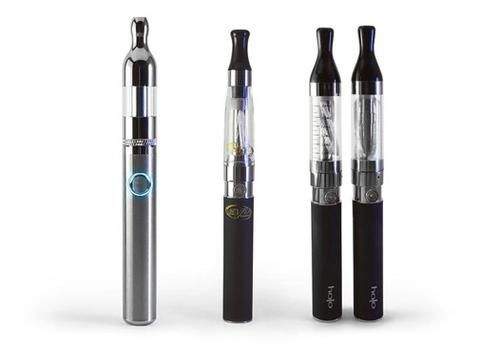Welcome to Child and Adolescent Behavioral Health's blog. Below is our first blog post. We will be making a blog post on an every other week basis. We hope you enjoy and share our content.
THE HISTORY OF VAPING
In the 1950s and 1960s, viewing a celebrity or average citizens on the street with a cigar or cigarette was common place, accepted by society. That view point changed as medical personnel discovered the harmful effects of smoking.
Cigarettes having been slowly fading from society as many cities and states have been smoking inside public buildings. Today, teenagers are experimenting with vaping – a far more dangerous habit that smoking yet viewed as “in” and “cool” by adolescents.
HOW DOES A VAPING DEVICE WORK?
Vaping is the use of electronic cigarettes to inhale vapors nicotine, marijuana (THC oil, leaves) or general flavorings. To vape is to inhale vapor created from a liquid heated up inside a device.
With a cigarette, one uses a lighter to light the cigarette and puffs on the other end of the cigarette. An e-cigarette has been touted as a safer way to quit or cut down on smoking but doctors say the battery-powered devices sometimes explode causing injuries. A vaping device has an LED light that glows on some devices when the user inhales. There is a battery in the device. A switch activates the heating element on some devices. There is a microprocessor slightly above the switch that is attached to a heating element. This heating element changes the “juice” into a vapor that is inhaled. A cartridge holds the solution of dissolved nicotine and propylene glycol called “juice.” The user then inhales through the mouthpiece.

HISTORY OF VAPING
Evidence of vaping has been recorded as early as 425 BC. Greek Historian Herodotus wrote about the Scythians vaporizing hemp seeds – “immediately it smokes, and gives out such a vapor as no Grecian vapour-bath can exceed; the Scyths, delighted, shout for joy, and this vapour serves them instead of water-bath.”
- 1927 - Joseph Robinson invented a device that resembled an e-cigarette. The idea was to create an easy to use device to vaporize medicinal compounds instead of burning them.
- 1963 – Herbert Gilbert built a prototype of the smokeless non-tobacco cigarette. Inhaling combusted material can’t be good for anyone’s health. In the December 1965 edition of the magazine Popular Mechanics it said the battered-powered “cigarette” uses no tobacco and produces no smoke. A replacement tip moistened with harmless, warmed chemicals could stimulate the flavor of anything from root beer to rum. Gilbert never commercialized his e-cigarette and the patent expired.
- 1979-1980 – Phil Ray commercialized a version of the e-cigarette that relied on evaporation of nicotine. This failed too. The verb “vape” is introduced to language
- 1990 – “Eagle” Bill Amato, a Cherokee medicine man, born in Cleveland invented the cannabis vaporizer, in Amsterdam. He is known for popularizing of the vaporizer, which he termed a “safe and effective alternative to smoking.”
- 1998 – Phillip Morris begins selling Accord, a battery-powered “heat not burn” device as a cigarette substitute
- 2003 – Hon Lik, a Chinese pharmacist and small-time medical researcher made the first modern e-cigarette. His invention was motivated by his own smoking addiction and the death of his father to lung cancer.
- 2004 – The first commercial e-cigarette is introduced in China
- 2006 – E-cigarettes are introduced to Europe first, then the United States
- 2008 – In a study funded by Ruyan, a detailed quantitative analysis concludes that, overall the product tested was deemed a “safe alternative to smoking.”
Beginning in 2009, regulatory battles begin on e-cigarettes. In 2009, Amazon prohibits the sale of electronic tobacco products on its website. In 2011, the Department of Transportation seeks unsuccessfully to lift the ban of e-cigarettes on aircrafts. In 2013, Italy lifts the public ban on vaping while Punjab, India, declares e-cigarettes illegal. In 2010, actress Katherine Heigel appears on David Letterman and discusses the smokebot electronic cigarette.
At this point, sales take off for e-cigarettes. In 2009, the industry made $39 million. Four years later, in August of 2013, the industry was selling $1.5 billion worth of product. In 2014, 13.1 million middle and high school students were aware of e-cigarettes. That same year, “vape” is made the word of the year by Oxford English Dictionary.
Pop culture perpetuated by Hollywood continued to influence the country. At the 2016 Academy Awards, a top of the line e-cigarette is included in the nominees’ goody bag. In 2017, a National Institute of Drug Addiction (NIDA) study found 6.3 percent of 14-year-olds and 9.3 percent of 16-year-olds are vaping.

THE VAPING DEVICE
There are more than 460 different types of e-cigarette brands on the market. There are e-pipes, e-cigars, large size, medium size, rechargeable and disposable. These devices go by many different names – vape pen, pod mods, tanks, electronic nicotine delivery devices, e-hookahs, e-cigarettes and vaporizers.
Pod systems are equipped with cartridges that contain the coil, wick and e-juice. These are fairly cheap at $30.
Juul: the iPhone of e-cigs. The name Juul was chosen because it evoked both a precious stone and the amount of energy required to produce one watt of power for one second. Kids can purchase Juuls in bulk on eBay and Amazon with prepaid debit cards. These pods look like USB drives and can be charged via USB port. In a previous post on their website, a Juul pod contains 40 mg of nicotine, which is similar to “the nicotine yield of a pack of cigarettes.”
Cannabis vaporizers and pens are quickly becoming one of the most popular consumption methods. A dab pen is a vaporized pen specifically designed to vape cannabis concentrates such as dry plants, oils or wax. The Pax 3 comes with a mobile app, cost $249 and has a 10-year limited warranty.
Vap Mods is short for modification. Mod can refer to any number of adjustments that make the device more powerful or functional in some way.
Today, adults and kids can build a custom mod. A custom mod is a one-of-kind mod that reflects personality and often times uses of graphic designer to create a custom design. Vape skins are designs that are customizable. It is the same term used for the visual personae that video-game players can select to represent their gaming characters. Some people use a stealth vape, which could look like a pen, sharpie or pencil. Vapers have been very creative as they design sneaky ways to vape undetected.
Another popular device, Sourin, is discrete and easy to operate. The device is quiet and does not generate a cloud. Most do not include a bright LED.
E-LIQUIDS
E-juice is the liquid (e-liquid, vape juice, cartridges, pods or oil) that is converted into vapor by an electronic cigarette device. The Center for Disease Control estimates there are 7,700 unique flavors.
The basic ingredients are vegetable glycerin, propylene glycol and concentrated flavors. Most e-liquids contain nicotine. To save money, many people make their own juices allowing them to control the amount of nicotine.
To get the biggest nicotine hit from each puff, some vapers take the outside cover off of their e-cigarette and use an eyedropper to “drip” the liquid directly into the coil’s device. It is “recommended” that one has a minimum of six months vaping experience, and one month of training from experienced dripper before partaking.
Dripping liquids reach higher temperatures when dripped directly on a coil, the superhot liquid transforms the harmless chemicals in the e-liquid into toxic ones, creating bigger clouds and bigger throat hit.
Most devices include a puff counter to let consumers know when to stop.
One in every four teens vapors said he/she has tried dripping. Most teens who dripped said they had hoped it would let them make thicker clouds or give the vapor a stronger taste.
If you know someone vaping who needs help to break their addiction, please contact C&A at 330-454-7917.
RECENT POSTS












